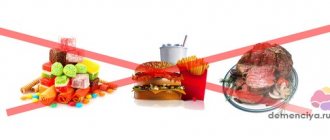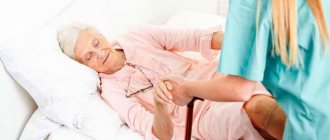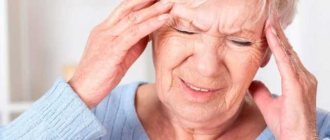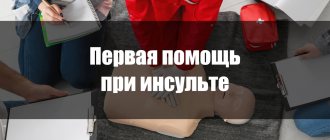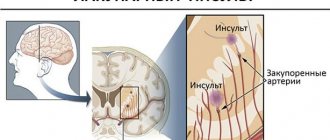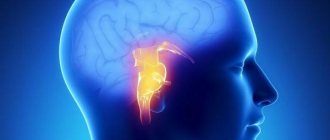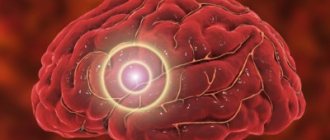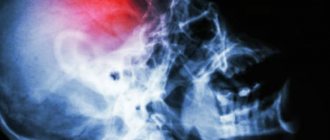Strokes are considered to be a disease of older people of retirement age. However, acute cerebrovascular accidents also occur in younger people. About 10% of strokes occur in patients under 45 years of age.
Such cases of diseases are usually considered separately. After all, strokes of young people differ from more classic cases:
- reasons, risk factors;
- structure of morbidity;
- forecast;
- duration, completeness of recovery;
- nuances of symptoms.
Main forms of brain stroke, morbidity structure
There are two main forms of pathology:
- ischemic stroke (cerebral infarction) – death of parts of the brain due to a lack of blood supply caused by violations of the full/partial patency of the cerebral arteries;
- hemorrhagic stroke (cerebral hemorrhage) is irreversible damage to certain areas of the brain caused by non-traumatic intracerebral bleeding.
In young people, the ratio between the two forms is approximately the same: 55% of cases are hemorrhagic in nature, 45% are ischemic (1). These figures are very different from those of older patients, who are characterized by a predominance of cerebral infarctions (about 85%). The distribution of incidence between the sexes is also unusual in young people. Before the age of 35, there are more women with stroke among patients, and after the age of 35 there are more men.
Causes of pathology, risk factors
Hemorrhagic and ischemic forms of stroke are caused by various reasons. The most common cause of cerebral infarction in young people is dissection of the carotid, vertebral or cerebral arteries (15-20% of cases) (2).
Damage to the vessel wall can be caused by infection, intense sneezing, coughing, or sudden turning of the head. In this case, the inner layer of the artery ruptures, part of the blood penetrates into the wall of the vessel, forming a hematoma that can block its lumen.
More rare causes of stroke at a young age with cerebral infarction:
- heart diseases: cardiomyopathies, endocarditis, atrial fibrillation, rheumatism, tumors - 10% of all cases;
- migraine;
- atherosclerosis;
- systemic vasculitis;
- primary vasculitis of the central nervous system;
- systemic lupus erythematosus;
- bleeding disorders;
- Moyamoya disease;
- sickle cell anemia;
- Sneddon's syndrome.
In 21% of cases, the cause of the stroke cannot be determined. In children, this figure is even higher: doctors cannot explain the origin of cerebral infarction in half of the patients (3).
Risk factors for ischemic stroke among young people include (1):
- arterial hypertension;
- non-closure of the oval window;
- elevated cholesterol levels;
- smoking;
- alcohol and drug addiction;
- obesity;
- inactivity;
- diabetes;
- heart disease;
- pregnancy;
- taking oral contraceptives;
- migraine.
The main cause of hemorrhagic stroke in women and young men is congenital pathologies of cerebral vessels: aneurysms, malformations. Aneurysms are small sac-like bulges in the wall of the brain's arteries that tend to burst. Malformations are the pathology of vascular branching, in which a tangle of weak, underdeveloped small arteries, veins, and capillaries is formed. Their walls are very fragile and prone to damage.
Rarer causes of hemorrhagic stroke include:
- bleeding disorders;
- drug use;
- vasculitis;
- hypertension;
- amyloidosis;
- pathological vascular cavities (cavernomas);
- preeclampsia or eclampsia;
- cerebral venous thrombosis.
In many cases, doctors are unable to determine the cause of the pathology. In children, cerebral hemorrhage is often observed as a complication after brain surgery.
The most significant risk factors for hemorrhagic stroke are high blood pressure and smoking. In addition, among young people with cerebral hemorrhage, many patients have bleeding disorders, hereditary predisposition, and alcohol and drug addictions.
Causes of stroke at a young age
- increased levels of protein in the blood, diseases of the circulatory system;
- pathologies of the heart muscle and blood vessels;
- diabetes;
- various infectious diseases;
- benign and malignant tumors;
- side effects of drugs;
- bad habits.
An increased level of protein in the blood is an alarming symptom, which is an important indicator of protein metabolism. The higher the protein level, the more serious the disease. This may be an autoimmune process or a bacterial disease, as well as some chronic pathologies, such as polyarthritis. High levels of protein are the cause of arterial blockage and the formation of microthrombi.
Infectious diseases can also become a risk factor for an attack - they affect the biochemical composition of the blood. Examples of such infections are encephalitis, meningitis, and herpes.
Diabetes mellitus, both type 1 and type 2, affects blood vessels and the heart. Pathology in the system causes disturbances in cerebral blood flow.
Tumors (benign and malignant), as they increase in size, directly affect blood circulation and mechanically compress blood vessels.
Side effects of some medications may include conditions that can lead to stroke. Recently, with the development of social networks and the Internet, the problem has acquired frightening proportions. At a correspondence appointment, “specialists” prescribe medications without even looking at the patient’s tests. Patients themselves can, without the help of doctors, find a description of any drug, prescribe it for themselves (again, without tests or examinations) and buy it without a prescription (also via the Internet).
Of course, not all medications have such serious consequences. You need to be especially careful about hormones (or those substances that affect their levels), including birth control pills.
An unhealthy lifestyle is a topic that a specialist of any profile is ready to support. Drinking alcohol, smoking, and physical inactivity are the main risk factors. Add to this constant stress, nervous tension and lack of proper nutrition habits (in particular, a lack of protein in food and a large amount of processed foods and fast food) - and now we already have every chance of getting a stroke at a young age, the causes of which are so banal that many don't even believe it.
Expert opinion
Author: Polina Yuryevna Vakhromeeva
Neurologist
Stroke at a young age, according to WHO, is suffered by patients between 15 and 45 years of age. Young patients may rarely suspect acute cerebrovascular accidents, since stroke is traditionally considered a disease of older people. The incidence of ischemic stroke in young people is 5-14%, and women are more susceptible to the disease than men. Heart defects, surgeries on this organ, and hormonal imbalances significantly increase the risk of developing ischemic stroke among young people. The cause is most often dissection of intracranial and extracranial arteries. In second place is cardiogenic embolism.
In young patients, the mechanism of stroke is different than in older patients, so a different approach to diagnosis and therapy is required. At the Yusupov Hospital, according to the protocols for the examination and management of such patients, the specifics of stroke in young people are taken into account. Those studies are prescribed that are most appropriate if acute cerebrovascular accidents are suspected in young patients. During the rehabilitation period, exercise therapy instructors work with patients.
Prevention of stroke in patients with risk factors includes control of blood pressure, blood sugar levels, smoking cessation, adjustment of necessary drug therapy, adequate physical activity and diet.
Features of the manifestation of the disease
Due to the low prevalence of the pathology and ingrained stereotypes, most people under 45 years of age deny the possibility of developing a stroke. American scientists conducted an interesting survey of 1000 men and women who were described the symptoms of a stroke. When asked what their next steps would be, only 30% of respondents said that they would seek medical help. Other people would prefer to monitor their condition and only if their health deteriorates significantly would they call a doctor.
Such an incorrect assessment is very dangerous. After all, doctors have only 3 hours from the moment the first signs appear to make a diagnosis and begin treatment. Therefore, it is very important for young people to know the symptoms of a stroke and be able to recognize it.
Specific signs of apoplexy include:
- weakness/paralysis of an arm, arm, leg, or all four limbs;
- loss of mobility of half of the face;
- violation of spatial orientation, coordination;
- decrease/loss of pain, tactile, temperature sensitivity;
- slurred, slow, mumbling speech with atypical construction of phrases and sentences;
- lack of adequate response to questions;
- unilateral hearing impairment;
- pupil trembling.
Specific symptoms may be supplemented by:
- fainting;
- convulsions;
- headache;
- dizziness;
- nausea;
- vomiting;
- ear noise;
- swallowing disorders;
- inhibition or, on the contrary, excitement.
Ischemic and hemorrhagic forms occur in different ways. Cerebral infarction (ischemic stroke) is characterized by a smoother onset and a gradual increase in symptoms. Fainting, nausea, vomiting, and convulsions are rare. But paresis, paralysis or speech impairment are almost always present.
It happens that after 10-15 minutes the patient’s condition improves. This phenomenon is called a transient ischemic attack (TIA) or mini-stroke. Despite its deceptive ease, it also requires emergency hospitalization and full treatment. Because the risk of a full-blown stroke, especially considering the specificity of its causes in young people, is very high.
With cerebral bleeding, the attack begins suddenly, often with fainting. Other symptoms: paresis, paralysis, speech impairment, coordination, and severe headache appear quickly. It is often accompanied by convulsions, nausea, and vomiting.
The course of stroke in men more often corresponds to the classic clinical picture. For women, atypical forms are more typical, occurring without paresis or paralysis, but with fainting, dizziness, shortness of breath, and visual impairment.
The first signs of stroke in men
The general symptoms and first signs of stroke in men are practically no different from the warning signs in women, but the stronger sex is more likely to exhibit motor activity disorders, which is typical for brain diseases.
What to pay attention to:
- Feeling of weakness in the upper and lower extremities, often unilateral. For example, when raising hands, one of the parties “doesn’t listen well.”
- Migraine-like pain syndrome. It is impossible to get rid of pain with painkillers.
- Vomiting is cerebral, with no feeling of relief.
- Increased salivation.
- Difficulty in speech pronunciation due to decreased sensitivity of the tongue.
- Discomfort when swallowing, as contractility in the muscular system of the oropharynx and throat weakens.
- Impaired coordination of movements - it is impossible to perform precise movements, especially when walking (the gait becomes unsteady).
- Disorientation in space and time - the patient does not recognize familiar objects, people, etc.
- Double vision is the inability to focus your gaze. The mobility of one of the eyeballs is difficult, so from the outside the gaze seems lifeless.
- Involuntary urination and cramps - in severe cases of the disease.
- Fear of light and loud noises. A person reacts inappropriately to a switched-on lamp and music (knock, thunder, etc.).
- Loss of strength, drowsiness, general weakness. The patient gets tired quickly, sleeps restlessly, and feels constantly tired.
Symptoms of stroke in men are divided into 2 groups:
- General cerebral: intense localized pain that occurs suddenly. Drowsiness and convulsions, nausea and gag reflexes, pale face and fainting, cyanosis of the skin.
- Focal: occur after general cerebral ones in 15-20 hours. They manifest themselves as numbness of the extremities, decreased sensitivity of the skin in areas of the body that are under the control of the affected part of the brain (BM). Further, visual and hearing acuity is impaired, pupils dilate, eyelids droop, memory is partially lost, and sweating increases. Feature: if hypotension is present, blood pressure drops, if hypertension is present, it increases.
Expert opinion
Author: Daria Olegovna Gromova
Neurologist
The danger of a stroke is the high risk of death. In addition, impaired cerebral circulation leads to serious complications. According to the Federal State Statistics Service, stroke ranks second in the structure of mortality. The disease causes disability. Depending on the severity of the lesion, in 60-70% of cases patients are assigned a disability group. The ability to self-service is lost in 10-15%. Stroke occurs at the same rate in men as in women. Cerebrovascular accidents are most often recorded between the ages of 40 and 65 years. However, recently doctors have been identifying the onset of the disease at an earlier age.
Diagnosis of stroke at the Yusupov Hospital is carried out using modern medical equipment. With the help of CT and MRI, it is possible to determine the type of disorder, its location and extent of prevalence. In accordance with the data obtained, the correct therapy is selected. With timely initiation of treatment, complete restoration of lost functions is possible. An individual rehabilitation complex is developed for each patient at the Yusupov Hospital. It includes not only medications, but also exercise therapy and physiotherapy.
Test "IMPACT"
How to recognize a stroke: characteristic symptoms
Due to the abundance of symptoms, recognizing a stroke at a young age can be difficult. Signs of apoplexy are especially often ignored by others in men who are mistaken for drunks. You can distinguish the clinical manifestations of an acute stroke using the “IMPACT” test:
- Smile – Ask the person to smile. A characteristic symptom of a stroke is one of the tips of the mouth lowered down and the other raised;
- Movements – Ask the victim to raise both arms up at the same time. A bad sign is that one limb is lower than the other or lowered.
- Articulation – ask the patient how he is feeling. An incomprehensible answer, the victim confuses, drawls words, sentences sound unnatural - a typical manifestation of a cerebral infarction or intracranial hemorrhage.
- Reaction – did at least one symptom coincide? Call an ambulance immediately.
Patient examination scheme
The principles and sequence of examination for stroke in young patients are no different from the generally accepted ones. The diagnostic scheme includes four stages:
- Rule out hemorrhagic stroke:
- computed tomography (CT) is the preferred method;
- Magnetic resonance imaging (MRI) – due to the duration of the examination, it is less preferable.
- Exclusion of ischemic stroke using MRI.
- Study of cerebral blood flow (according to indications):
- angiography – a picture of the vessels of the head after intravenous administration of a special dye, making their contours clearly defined;
- Dopplerography is the study of cerebral blood flow using ultrasound.
- Auxiliary tests are necessary to assess the general health of the patient and identify the causes (according to indications):
- biochemistry, general blood test;
- echocardiogram;
- electrocardiogram;
- blood clotting test (coagulogram);
- X-rays of light;
- lumbar puncture;
- genetic testing.
Late symptoms of stroke in women
You can detect a stroke in women based on late signs yourself.
Symptoms and first signs of stroke in women are no different from men
A person who has already had an attack is unable to do 3 simple things:
- If a woman is asked to smile broadly, as a rule, she will not be able to do this. The side of the face that was affected by the stroke remains motionless.
- The patient will not be able to repeat any phrase quickly.
- A person will not be able to raise his hands up.
During an attack, the tip of the tongue, if stuck out, will deviate to the side.
Features of treatment
The treatment regimen for stroke is the same for people of any age. It will include:
- mandatory hospitalization;
- basic therapy, common to both forms of apoplexy;
- specific treatment.
The main goals of basic therapy:
- restoration of breathing (clearing the airways or intubation);
- reduction in blood pressure to the level of 160-180/90-100 mm Hg. Art. (captopril, enalapril);
- elimination of arrhythmias, signs of coronary heart disease (nitroglycerin);
- prevention/reduction of cerebral edema (diacarb, mannitol);
- control of seizures (diazepam);
- pain relief (morphine).
In case of confirmed cerebral infarction, if no more than 6 hours have passed since the onset of the attack, patients are given intravenous thrombolytics - drugs that dissolve blood clots. In addition, patients are prescribed medications that prevent blood clots: clopidogrel or aspirin.
Extensive ischemic stroke caused by narrowing of the middle cerebral artery may be an indication for hemicraniectomy, a surgical operation to remove part of the skull. Surgery provides additional space for the brain, which prevents a fatal increase in intracranial pressure.
Hemorrhagic stroke in young people caused by a ruptured aneurysm or malformation requires surgical treatment. It is performed using a minimally invasive technique that involves minimal tissue damage. The doctor inserts a thin catheter through the inguinal vessel and advances its tip under the control of a specific x-ray to the site of the rupture.
Then another thinner one, equipped with miniature instruments, is inserted inside the first catheter. In case of an aneurysm, the doctor uses it to insert a twisted wire into the cavity of the sac. As it expands, it fills the lumen of the growth, provokes thrombus formation, and closure of the defect. Over time, the neutralized aneurysm completely heals. In case of malformation, the surgeon uses a special glue that is used to fill the damaged vessel.
After stabilizing the patient’s condition, Russian doctors often prescribe neuroprotectors - drugs that improve blood supply to brain tissue, stimulate metabolic processes in the brain, and accelerate the restoration of organ functions: piracetam, fezam, actovegin, cerebrolysin. In foreign practice, such drugs are not used due to unproven effectiveness.
Consequences, complications
After a stroke, most young people experience the loss of one, or often several, motor, sensory, cognitive or speech functions.
The consequences of acute cerebrovascular accident can be manifested by loss/impairment of:
- motor activity;
- sensitivity;
- coordination;
- orientation;
- thinking;
- memory;
- vision;
- hearing;
- speech.
The most dangerous complications of cerebrovascular accidents, which are associated with the largest number of deaths, include:
- cerebral edema;
- pneumonia;
- heart pathologies (arrhythmias, myocardial infarction);
- pulmonary embolism;
- blood poisoning (sepsis);
- relapse;
- renal failure.
Psychological disorders constitute a special category of consequences. Depression is registered in every second or third stroke patient. It is considered one of the main factors influencing the quality of the future of young people.
The most common complications are cerebral edema - the main cause of death of the patient, less often - relapse of the disease, pneumonia, myocardial infarction, infections.
Consequences of stroke in childhood
Stroke is a disorder of cerebral circulation due to blockage of a vessel (ischemic stroke) or rupture of a vessel (hemorrhagic stroke). The consequences of a stroke depend on the location and severity of cerebrovascular accident (CVA).
Strokes in childhood can occur as a result of metabolic disorders in the body, traumatic brain injuries, cancer and toxic diseases, abnormalities in the structure of blood vessels, complications during pregnancy and childbirth, and a number of other reasons.
Symptoms
Symptoms of the consequences of strokes in childhood are more extensive and varied than in adults. Having suffered a stroke in utero or during early childhood, a child, in some cases, may not demonstrate pronounced symptoms indicating the presence of a serious illness. Symptoms of a stroke in the first months of life may include sleep and appetite disturbances, decreased motor activity, episodes of seizures, and developmental delays. Sometimes symptoms do not appear immediately, but after a certain period of time. This is due to the fact that most mental and motor functions at an early age are not yet developed and pronounced disorders against the background of unformed functions cannot be discerned.
In adulthood, after cerebral obstruction, the child may experience impaired motor functions, speech and attention disorders, episodes of “unusual” inappropriate behavior, lethargy, and paralysis of the limbs.
In itself, cerebrovascular accident is a serious disease and, regardless of age, requires timely medical diagnosis and treatment in a neurological hospital.
Consequences
A particular problem is the consequences of stroke in childhood. A stroke suffered in the first months of life or in utero can cause delays in psycho-speech development (ZPR, ZRR, ONR, alalia), motor impairment and cerebral palsy (CP). The severity of developmental disorders can range from developmental delays to mental retardation.
Stroke suffered by children of older age, when mental functions have already been formed, will give a picture characteristic of an adult stroke clinic - speech disorders (aphasia, dysarthria), motor disorders (paresis, apraxia), perception disorders (agnosia), thinking disorders, attention disorders and memory.
Regardless of the child’s age, it is necessary to always remember the fact that the child has not yet reached the maximum of his development and the brain disease suffered, even if it is overcome at first glance favorably, can have a negative impact on the child’s development in the future. Therefore, it is necessary to be as attentive as possible to the process of rehabilitation, development and education of children with a history of consequences of cerebral obstruction.
A stroke can affect not only the state of the nervous system, but also affect the functioning of various internal organs.
Diagnosis and treatment
Doctors such as a neurologist, cardiologist and pediatrician are involved in diagnosing the condition of a child who has suffered a stroke and drawing up a treatment program. When diagnosing, hardware research methods are used - MRI, CT, EEG, ultrasound, ECG.
A neuropsychologist and speech therapist are involved in diagnosing the state of higher mental functions and subsequent developmental training.
Often, patients after a stroke need to undergo a course of massage, osteopathic treatment, transcranial magnetic stimulation (TMS) and a number of other rehabilitation procedures.
Rehabilitation
The rehabilitation program is individualized taking into account existing disorders. It can be aimed at:
| Tasks | Rehabilitation activities |
| Restoring motor skills |
|
| Restoring memory, intelligence |
|
| Vision restoration |
|
| Speech restoration |
|
In general, recovery after a stroke in young people is quite successful: 4 out of 5 people do not need help from strangers. Many of them remain able to work, although they have a number of work restrictions.
However, despite good prospects, the rehabilitation of young patients has one global problem. Unlike older patients, these people are in the prime of life, at the peak of their career, many have families and small children. Such patients experience social isolation, multiple restrictions, and problems with employment very hard and painfully.
The deterioration in the quality of life and the tense situation within the family cause a high prevalence of suicide among young patients. Therefore, an important place in the rehabilitation of such patients is the fight against depression. It may include individual or group work with a psychologist, taking antidepressants, assistance in retraining, employment, and stimulation of social adaptation.
Forecast
Compared with peers, young stroke survivors have a much higher mortality rate, a high risk of recurrent stroke, as well as other cardiovascular pathologies, and their quality of life is significantly reduced. However, compared with older patients, their short-term and long-term prognosis is much better.
For example, the mortality rate from ischemic stroke in the first month after the stroke is only 2%, not 15-25%. The risk of death one year after a brain stroke is 5%, 5 years – 9-10%, 10 years – 12% (4). The hemorrhagic form is more severe, with a higher mortality rate in the first year.
Prevention
The main principle of primary prevention is to eliminate the possible cause of stroke in young people, as well as risk factors for developing the disease. To do this, all patients with identified pathologies of the cardiovascular system, diabetes mellitus, hypertension need to undergo a full diagnosis in a timely manner and begin treatment. It is also recommended for young people who have relatives with early cardiovascular diseases to visit a doctor and undergo a comprehensive examination.
In addition, it makes sense to start leading a healthy lifestyle:
- give up cigarettes and drugs;
- reduce alcohol consumption;
- control your weight;
- Healthy food;
- exercise.
To prevent relapse, it is important to follow the same principles, as well as follow the doctor's instructions.
Causes of stroke in people aged 30 years
Stroke in young people is more often diagnosed as ischemic (more than 50% of cases). That is, there is a sudden disruption of blood flow in the vascular system of the brain. In turn, a violation of the blood supply occurs against the background of blockage of the vessel by a thrombus or against the background of its spasm. The immediate causes of stroke in young men and women, which lead to the separation of a blood clot or artery spasm, are:
- diabetes mellitus type 1, in which angiopathy develops;
- unclosed oval window;
- aortic aneurysm of the interatrial septum.
In other cases, young people are diagnosed with a hemorrhagic type of stroke. That is, a cerebral hemorrhage occurs. Pathology is formed for a number of reasons:
- smoking and frequent drinking of alcohol;
- drug addiction and substance abuse;
- love for fatty foods, sweets and fast food;
- obesity;
- taking oral contraceptives;
- constant stress and emotional stress;
- constant disruption to the daily routine (night shifts, shift work without proper rest).
Among the less common causes of stroke in young people are the following congenital and acquired pathologies:
- mitral valve prolapse;
- tumor in the area of the skull and neck;
- myxoma of the heart;
- blood diseases such as leukemia, anemia, etc.;
- vasculitis;
- taking anticoagulants;
- protein deposition.
